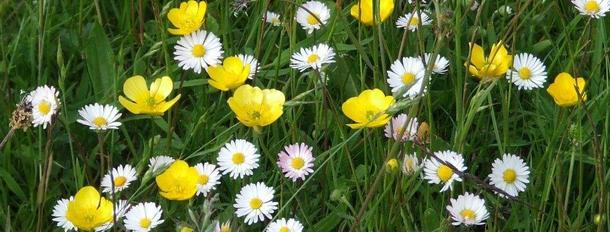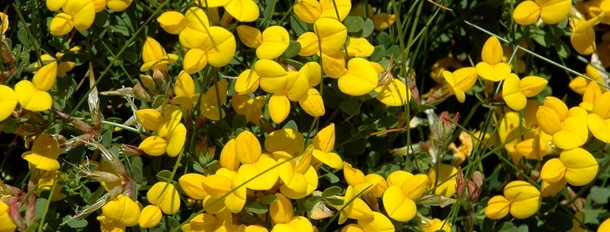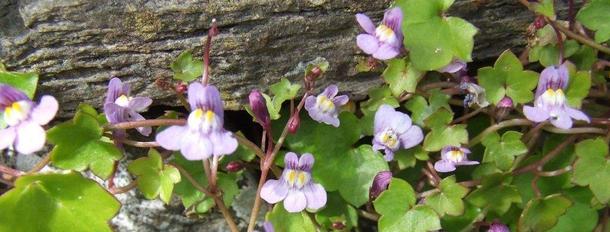There are many different habitats; sandy beaches, rocks and cliff faces and old walls, fields and roadside verges, moorland and bogs. The climate of the west coast of Scotland is mild because of the influence of the Gulf stream, hard frosts are rare which suits wild fuschia which thrives in the village. The rainfall is relatively low (some may question that!) as the rain bearing clouds coming off the Atlantic hold their moisture until they rise over the mountains. Gales batter the island from time to time during autumn and winter, consequently plants tend to be low growing and there are few trees. Creeping willow and juniper grow on the moorland, and stunted oak, hazel and alder in sheltered coastal gullies.
Spring

Snowdrops brighten dark January days, growing under the trees by the Heritage Centre. In March and April common spring flowers include celandines, primroses, and wild hyacinths. On the walls of the nunnery grows a small purple flower, ivy leaved toadflax. Its long, thin roots find their way to nutrients deep inside the stonework. The same survival technique is used by other plants which thrive on rocks and cliffs, like thrift, or sea pink, wall pennywort and roseroot.
Summer Flowers

After the spring flowers comes a riot of colour beginning in late May and June. The wild iris, or yellow flag, is prolific, at its best around St.Columba`s Day on June 9th. Along the roadside is yellow birds foot trefoil, so named because its seedhead resembles a bird`s foot, contrasting beautifully with the bright blue germander speedwell. Fields of grass grown for hay and silage are cut late in order to protect nesting corncrakes, and this benefits wild flowers, the fields bright with buttercups daisies, clover and other species. On beaches, above the tide line, grows silverweed, with its pretty yellow flowers and silver backed leaves, its red runners spreading out to colonise new ground. Another sand loving plant, found at the North End, is sea holly.
Iona has four orchids, the most common is the heath spotted orchid, its mauve flowers can be seen all over the moorland in summer. The larger northern marsh orchid thrives in wet areas in June - there are usually fine specimens near the fire station. The early purple orchid flowers in spring, it grows well on the way to St.Columba`s Bay and the Marble Quarry. The rare frog orchid, which flowers in July is hard to see, being green and just a few centimetres high. It can be found in Sandeels Bay by those with sharp eyes and determination.
By August the hills are purple with heather, and along the roadsides are harebells, (the true Scottish bluebell) and purple thistles and knapweed, the seeds of which provide food for flocks of goldfinches and linnets.
Autumn

Autumn has its own subtle beauty, with grasses and bracken turning gold, and small red leaves, colourful seedheads, and bright red and green mosses to delight sharp eyes. By October seeds have been scattered, roots and bulbs are strong, and it`s time to go into hibernation until the yearly cycle begins again with the lengthening days.








